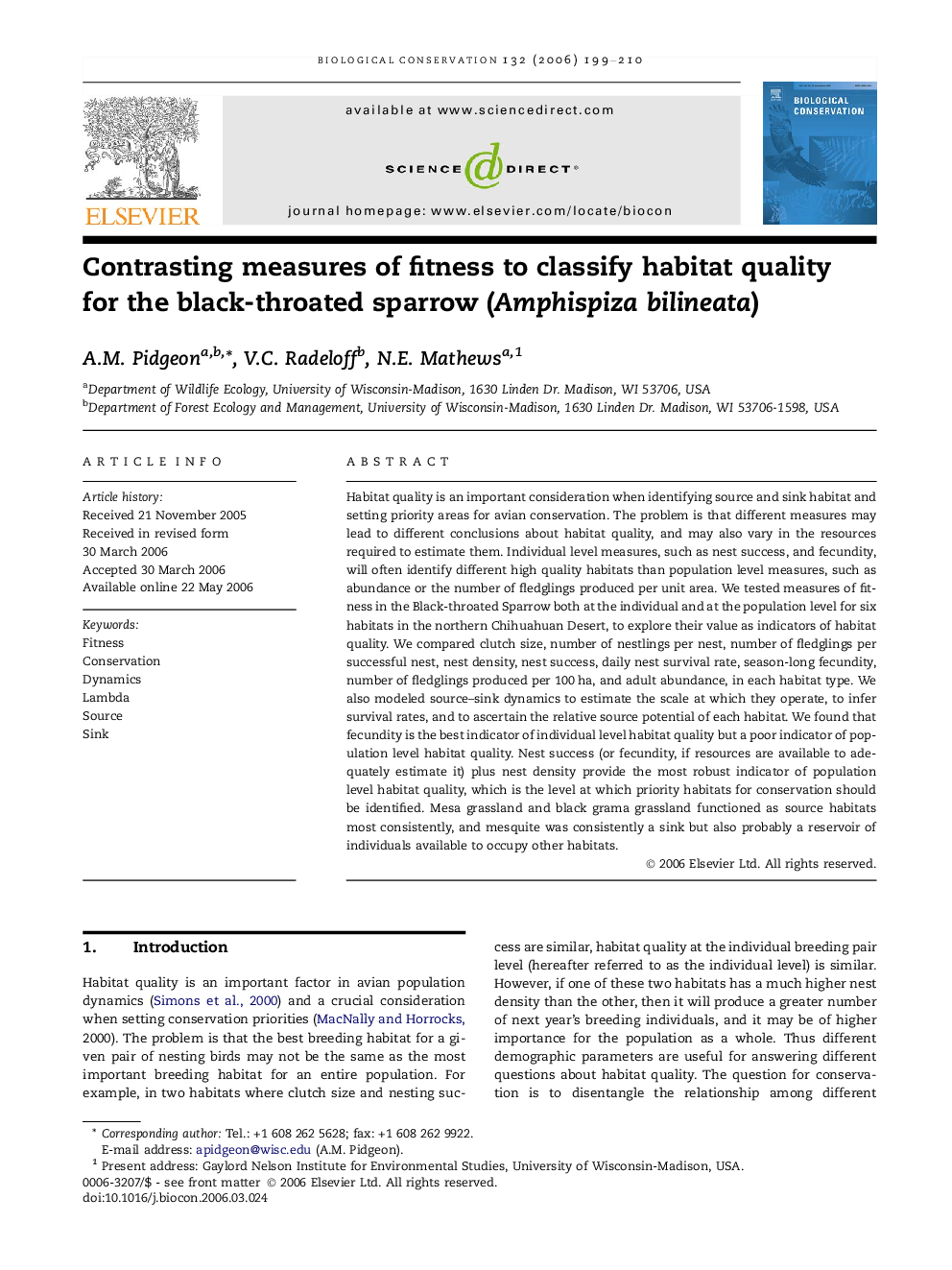| کد مقاله | کد نشریه | سال انتشار | مقاله انگلیسی | نسخه تمام متن |
|---|---|---|---|---|
| 4387389 | 1304603 | 2006 | 12 صفحه PDF | دانلود رایگان |
عنوان انگلیسی مقاله ISI
Contrasting measures of fitness to classify habitat quality for the black-throated sparrow (Amphispiza bilineata)
دانلود مقاله + سفارش ترجمه
دانلود مقاله ISI انگلیسی
رایگان برای ایرانیان
کلمات کلیدی
موضوعات مرتبط
علوم زیستی و بیوفناوری
علوم کشاورزی و بیولوژیک
بوم شناسی، تکامل، رفتار و سامانه شناسی
پیش نمایش صفحه اول مقاله

چکیده انگلیسی
Habitat quality is an important consideration when identifying source and sink habitat and setting priority areas for avian conservation. The problem is that different measures may lead to different conclusions about habitat quality, and may also vary in the resources required to estimate them. Individual level measures, such as nest success, and fecundity, will often identify different high quality habitats than population level measures, such as abundance or the number of fledglings produced per unit area. We tested measures of fitness in the Black-throated Sparrow both at the individual and at the population level for six habitats in the northern Chihuahuan Desert, to explore their value as indicators of habitat quality. We compared clutch size, number of nestlings per nest, number of fledglings per successful nest, nest density, nest success, daily nest survival rate, season-long fecundity, number of fledglings produced per 100Â ha, and adult abundance, in each habitat type. We also modeled source-sink dynamics to estimate the scale at which they operate, to infer survival rates, and to ascertain the relative source potential of each habitat. We found that fecundity is the best indicator of individual level habitat quality but a poor indicator of population level habitat quality. Nest success (or fecundity, if resources are available to adequately estimate it) plus nest density provide the most robust indicator of population level habitat quality, which is the level at which priority habitats for conservation should be identified. Mesa grassland and black grama grassland functioned as source habitats most consistently, and mesquite was consistently a sink but also probably a reservoir of individuals available to occupy other habitats.
ناشر
Database: Elsevier - ScienceDirect (ساینس دایرکت)
Journal: Biological Conservation - Volume 132, Issue 2, October 2006, Pages 199-210
Journal: Biological Conservation - Volume 132, Issue 2, October 2006, Pages 199-210
نویسندگان
A.M. Pidgeon, V.C. Radeloff, N.E. Mathews,